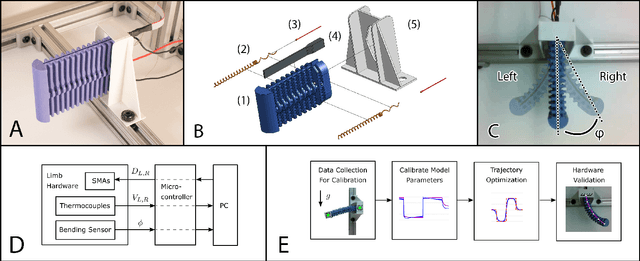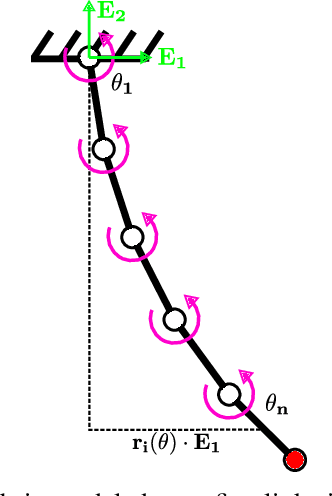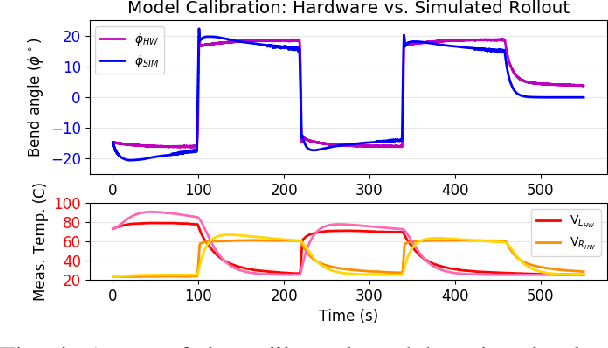Anthony Wertz
Trajectory Optimization for Thermally-Actuated Soft Planar Robot Limbs
Oct 18, 2021



Abstract:Practical use of robotic manipulators made from soft materials will require planning for complex motions. We present the first approach for generating trajectories of a thermally-actuated soft robotic manipulator. Based on simplified approximations of the soft arm and its shape-memory-alloy (SMA) wires, we justify a dynamics model of a discretized rigid manipulator with joint torques proportional to wire temperature. Then, we propose a method to calibrate this model from hardware data, and demonstrate that the simulation aligns well with a test trajectory. Finally, we use direct collocation trajectory optimization with the non-linear dynamics to derive open-loop controls for feasible trajectories that closely align with desired reference inputs. Two example trajectories are verified in hardware. The results show promise for both open-loop planning as well as for future applications with feedback.
Detecting Patterns of Physiological Response to Hemodynamic Stress via Unsupervised Deep Learning
Nov 12, 2019



Abstract:Monitoring physiological responses to hemodynamic stress can help in determining appropriate treatment and ensuring good patient outcomes. Physicians' intuition suggests that the human body has a number of physiological response patterns to hemorrhage which escalate as blood loss continues, however the exact etiology and phenotypes of such responses are not well known or understood only at a coarse level. Although previous research has shown that machine learning models can perform well in hemorrhage detection and survival prediction, it is unclear whether machine learning could help to identify and characterize the underlying physiological responses in raw vital sign data. We approach this problem by first transforming the high-dimensional vital sign time series into a tractable, lower-dimensional latent space using a dilated, causal convolutional encoder model trained purely unsupervised. Second, we identify informative clusters in the embeddings. By analyzing the clusters of latent embeddings and visualizing them over time, we hypothesize that the clusters correspond to the physiological response patterns that match physicians' intuition. Furthermore, we attempt to evaluate the latent embeddings using a variety of methods, such as predicting the cluster labels using explainable features.
 Add to Chrome
Add to Chrome Add to Firefox
Add to Firefox Add to Edge
Add to Edge